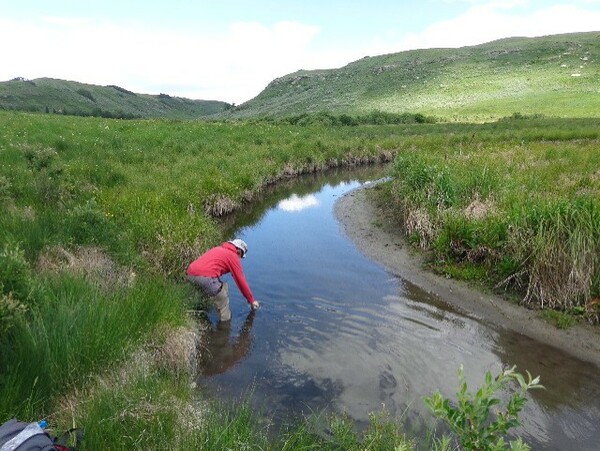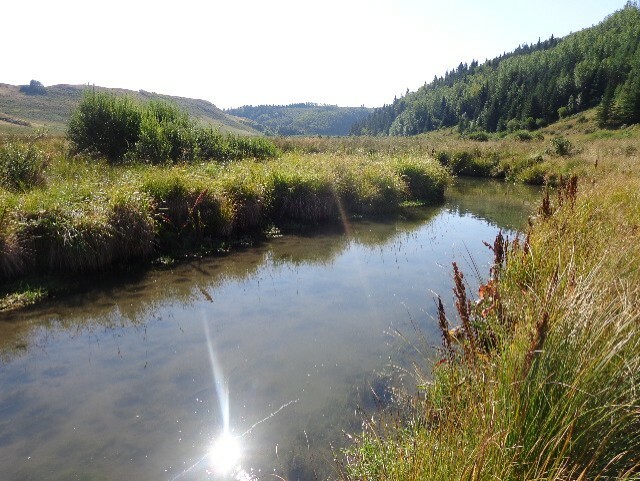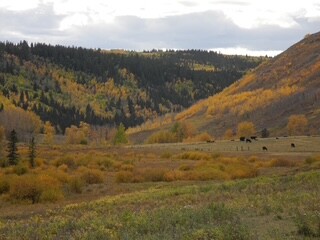Stewardship Showcase: More Than Just Data

How a State of the Watershed Report is Shaping Future Stewardship
Assessing and protecting the health of a watershed takes more than just care, dedication and long-term commitment. It also requires extensive data collection and analysis in key areas including surface and groundwater, hydrology, water management, biodiversity, land use, riparian areas and wetlands and more.
It also requires some form of documentation that gathers all of this vital information in one place. For most organizations that are tasked with caring for watersheds, that document is a State of the Watershed (SOW) Report – a comprehensive document that identifies current conditions, changes, trends and areas of concern, identifies desired future state, informs discussions on the best path forward and outlines a long-term collaborative management approach to stewarding and protecting a watershed.
As one might imagine, the process of developing a SOW is far from simple. A watershed can span hundreds of square kilometers, encompassing diverse ecosystems, unique landscapes, a wide variety of species, distinct communities and numerous stakeholders, all of which must be considered when gathering information for the report. Another key factor in the development of a SOW is the time it takes to pull a report of this nature together.
Three-time Watershed Stewardship Grant (WSG) recipient Bighill Creek Preservation Society (BCPS) understands this firsthand. After six plus years of dedicated work and collaboration, BCPS is putting the final touches on their SOW Report. The team plans to publish it on their website this fall, marking a major milestone in their ongoing efforts to protect and preserve the vital and distinct region that is the Bighill Creek Watershed.
“The WSG has been a primary source of funding for this extensive SOW report project,” says Vivian Pharis, Vice President of BCPS. “This support has been fundamentally important to us.”
Creating a SOW report is a valuable process that can be applied at any scale to assess past and current conditions and influencing factors. It is crucial for identifying potential issues, and the insights benefit government agencies, consultants, researchers and other key players in evaluating environmental conditions and setting actionable outcomes for watershed management and preservation.
As mentioned by Wendell Koning, Limnologist, Water Quality Specialist and lead on the SOW report project, in his Bighill Creek State of the Watershed Report Update presentation at BCPS's Annual General Meeting this April, BCPS’s main mission is “to ensure the natural and historical values of Bighill Creek Watershed are preserved for this and future generations.”
This dedication is evident in the years of BCPS’s fieldwork, in close collaboration with Bow River Basin Council (BRBC) that contributed to the creation of their SOW Report. The report will be used to educate and engage residents and land managers, and it will also play a significant role in advocating for the protection of the unique qualities of the valley and watershed.
The Bighill Creek Watershed is a crucial ecological, historical and recreational resource. Providing habitat for diverse wildlife, it is a corridor to the Bow River valley and the spring-fed creek remains a vital spawning area.
In the lead-up to and throughout BCPS’s 2019, 2023 and 2024 WSG projects, BCPS has conducted extensive research on water quality, fish populations, steam health and habitat conditions across the watershed. Experts have also reviewed the main valley’s geology and archeology and have assessed the needs of Big Hill Springs Provincial Park, identifying opportunities to expand trails, enhance recreation, and support biodiversity.
“We need the valley protected,” explains Vivian. “It is a very unique valley for many reasons, from archeology to it being a wildlife corridor, it needs a concerted effort for protection, and that’s where we see our SOW report playing a role.”
For example, trends in their SOW report highlight a healthy population of native fish species in the creek. As part of the research that contributed to the report, Cows & Fish conducted two riparian studies on the creek which found that 87% of the creek’s riparian areas remain largely intact, which is an encouraging sign. The knowledge provided by that research enables BCPS to now focus on preserving and enhancing this positive trend and the report will provide the foundation for these efforts.
Part of the preservation efforts will also come from addressing some of the key concerns highlighted in the SOW report, like the surge of gravel trucks on highway 567. Since gravel companies have purchased land near Big Hill Springs Provincial Park, BCPS is now pushing back on the potential development of additional gravel pits, several of which would damage the main spring, threatening its mineral-rich water and the creek’s trout production. With one pit already operating, trucks are running at a rate of one per minute and, with the highway cutting through a key wildlife corridor, this is leading to roadkill despite the use of official wildlife crossing signage from Alberta Transportation. BCPS believes this impact would only worsen with more pits in the area.
This is just one example of how the SOW report will serve as the cornerstone for advocating for the protection of the watershed and specific management approaches to alleviate or mitigate the impacts that human activity and development can have on this important landscape.
Watch for BCPS’s SOW report on their website and that of BRBC this fall.





Leave a comment